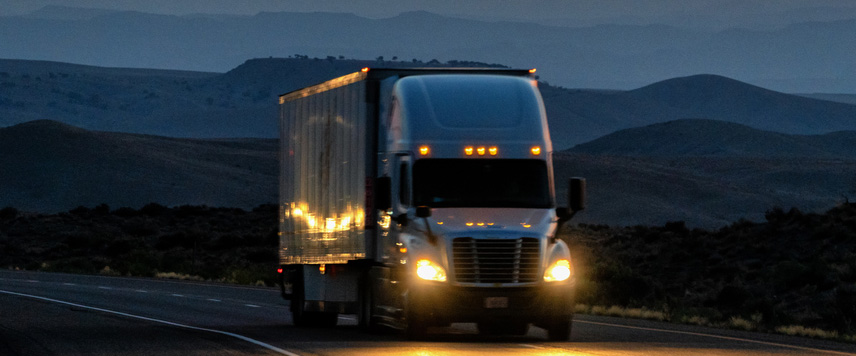As many in the trucking industry are aware, President Donald Trump issued an executive order on the first day of his second term, where he promised massive amounts of government deregulation. Taking this order to heart, the new Environmental Protection Agency Administrator, Lee Zeldin, took only two months to get affairs at the agency in order before he began to take a hatchet to many of the Biden administration’s regulations dealing with greenhouse gas emissions and nitrous oxide emissions. While these deregulations come much to the chagrin of environmentalists, the trucking industry itself has let it be known that they are fully behind the EPA administrator’s changes. So, what exactly is Mr. Zeldin deregulating? And what does the trucking industry look forward to with these changes? Join the LZBlog today and find out!
“What’s Goin’ On” at the EPA?
On March 12, 2025, the EPA, under the leadership of the newly appointed administrator Lee Zeldin, announced that they would be examining thirty-one different actions taken by the Biden administration. The goal is to do away with the ones seen as frivolous or harmful to the economy. Zeldin obtusely called his announcement “the greatest and most consequential day of deregulation in U.S. history.” While each of the thirty-one rules has their own important virtues, the two major regulations under attack are Phase 3 of the “Greenhouse Gas Emissions Standards for Heavy-Duty Vehicles rules as well as its Heavy-Duty Nitrous Oxide rule.” Both of these standards were set under the previous president’s time in office, and both were heavily debated and argued against by the trucking industry.
The Greenhouse Gas Emissions Standards for Heavy-Duty Vehicles – Phase 3 is one of the biggest pieces of environmental regulation to directly affect the trucking industry. Set to take effect in 2027, Phase 3 rules were supposed to encourage heavy-duty truck manufacturers to switch to selling zero-emission vehicles. Taking a slow approach, the goal was to have this rule come into effect in 2027, with the hope that a fourth of new trucks on the road in 2032 would produce zero-emissions. Of course, according to the EPA, there would still be older diesel trucks on the road, but there would be a gradual reduction in the coming years. While most agree that these rules make sense in theory, the trucking industry has many valid concerns. One of the first being that most of the heavy-duty trucks and their components come from overseas. Right now, with Trump’s tariffs looming heavily overhead, there is already a concern that as much as $30,000 could be added to the upfront cost of a Class 8 truck. After the new GHG – Phase 3 rules are put into place, trucking companies worry that new zero-emission trucks will be priced even higher, putting new trucks out of the reach of many smaller businesses.
Alongside Greenhouse Gas Emissions Standards for Heavy-Duty Vehicles, trucking companies are also extremely concerned about the Heavy-Duty Nitrous Oxide rule. Created under the first Trump administration, the rule was not finalized until the Biden administration in 2022. This regulation was also on track to be enforced starting in 2027. Basically, “It focuses on tailpipe emissions for model year 2027 equipment and beyond.” In order to implement this rule, though, there is a concern that the diesel treatment technology needed to decrease the amount of nitrous oxide coming from heavy-duty truck tailpipes will increase the cost of the trucks by $20,000 to $30,000, before tariffs or any other issues could come into play. Along with the diesel treatments, warranty requirements are grave concerns for a trucking industry still coming out of the Great Freight Recession. These additional costs could force out smaller trucking companies who cannot put forth the upfront costs for these new, environmentally friendlier trucks. Also, the industry states that the rising prices for these trucks will be passed on to consumers in the form of higher costs for food and household goods, which is something that worries everyone.
How Is the Industry Reacting to These Changes?
While there is much rejoicing coming from the trucking industry in regard to the deregulation, there is also a great deal of caution being shown. The forecast for truck purchases, as well as the pre-buy volume, is way down for 2025, so far. Originally, industry experts expected the new heavy-duty truck requirements to spark a buying frenzy. With trucking companies needing to stay compliant with the new rules, newly developed trucks were supposed to be selling rapidly with “new engine emission technology, aftertreatment systems, and aerodynamics.” However, now, thanks to the new policy of dismantling and deregulating standards applied to trucks to protect the environment, coupled with the concerns about the on again, off again tariff situation, the number of new truck pre-sales has slowed dramatically. Dan Moyer, at FTR Transportation Intelligence, has stated that his analysis “has removed projected pre-buy volumes from its baseline forecasts for Class 8 and Class 6-7 trucks and tractors.” In February, FTR also noted a 31% decline from January’s sales in new Class 8 truck orders for North America. For now, even though forecasts are still trending in a positive direction for 2026 and 2027, the industry is waiting to see if Zeldin’s EPA makes any other large changes to regulations concerning heavy-duty trucks before planning trucking companies plan their next purchases.
Conclusion
Environmentalists are concerned, but the trucking industry is asking them to be patient. For now, many in the industry are sticking to the GHG – Phase 2 requirements and standards. Trucking companies have been studying emission standards from the EPA and is monitoring Zeldin’s deregulations. Jim Mullen, an executive director with the Clean Freight Coalition, has stated that “reduced regulations will allow zero- and near-zero-emissions transportation technology to develop based on market needs that eventually give fleets better choices.” Stating that previous standards set by the Biden administration were “overly burdensome,” Mullen hopes to continue to work with both the EPA and the trucking industry to make sure that any future emissions regulations do not come at the expense of the trucking companies that move America’s goods to its consumers. Those like Chris Spear, head of the American Trucking Associations, echoes that sentiment. He and many others in the trucking industry are commending the new Transportation Freedom Act, which hopes to “allow innovation to flourish and foster achievable national standards that put us back on the path to lowering emissions without causing supply chain disruptions.”
The EPA and the trucking industry have had a tenuous relationship over the past several years. Under the new Trump administration, though, there is hope that deregulations of previous rules will foster a new era of companionable work that will lead to continued forward momentum when it comes to controlling the trucking industry’s greenhouse gas emissions. Hopefully, these new friendships will not come at the cost of the progressive strides made to protect the U.S. environment by the previous administrations.
__________________________________________________________________________
Meaghan Goldberg covers recruitment and digital marketing for Lionzone. A Patterson, GA native, after graduating from both Valdosta State University and Middle Tennessee State University, Meaghan joined Lionzone in 2018 as a digital recruitment strategist before becoming the social media manager.
Resources:
https://www.freightwaves.com/news/epa-gives-trucking-oems-whiplash-with-emissions-rule-rollback-plan
https://www.ttnews.com/articles/epa-heavy-truck-rollback
https://www.epa.gov/newsreleases/epa-launches-biggest-deregulatory-action-us-history
https://www.freightwaves.com/news/epa-announces-rollback-of-biden-harris-emissions-rules




